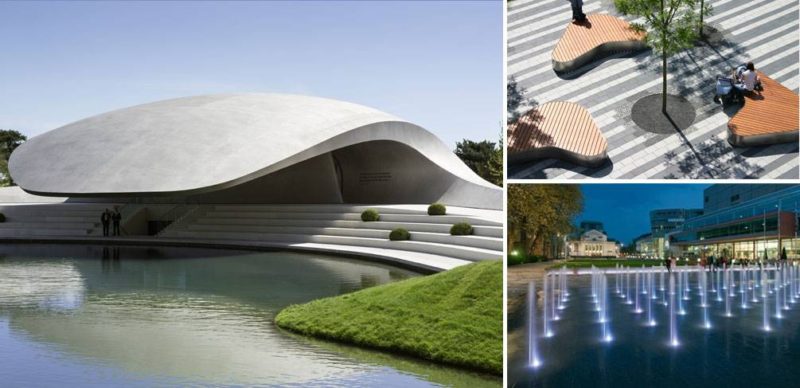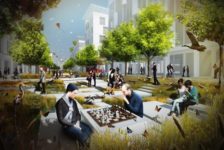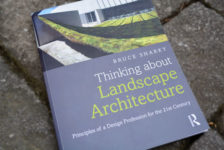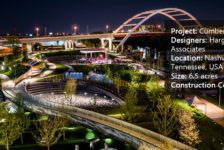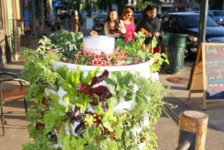Article by Radenka Kolarov Following on in our world series we have selected 10 awesome projects that perfectly represent landscape architecture in Germany today. Let me ask you, have you seen those astonishing German landscapes? In case you haven’t, don’t waste any second more, and give you self the trip of a lifetime. You won’t regret seeing the projects in landscape architecture too, they are equally marvelous. From beautiful pavilions through a garden of remembrance to great public-square solutions, you will find out just how awesome Germany actually is.
Landscape Architecture in Germany
10. KALA Square, by Rehwaldt LA, in Berlin The site used to be the residence of industrial employees before the Second World War. Now this public-square solution is multifunctional as a place for the children, and also for the elders. Materials like concrete, sand, bright wood and water are used to set the stage. Blocks, sheets, meshes and ground vegetation are arranged in strategic positions, giving space for children to play, to allow for public passage, and for the rest and picnicking of elders and families.
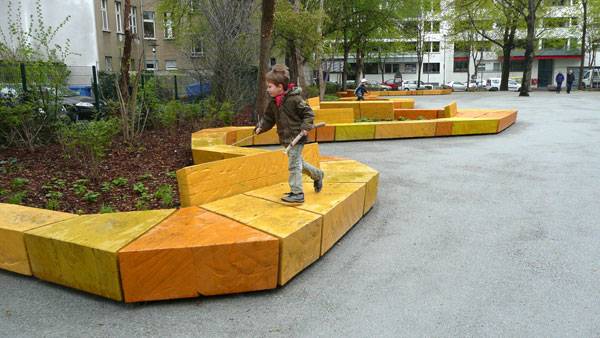
KALA – Playground and Green Space. Photo credit: Rehwaldt LA
Right in the front of the theater lies a large grassy park space. That simple lawn provides a meeting place where everyone can settle as he or she wishes. This simple-yet-so-effective design consists of a game between the hardscape, vegetation and water jets that animate the central space. The furniture is discreet and comfortable, which alltogether makes for a terrific ambience.
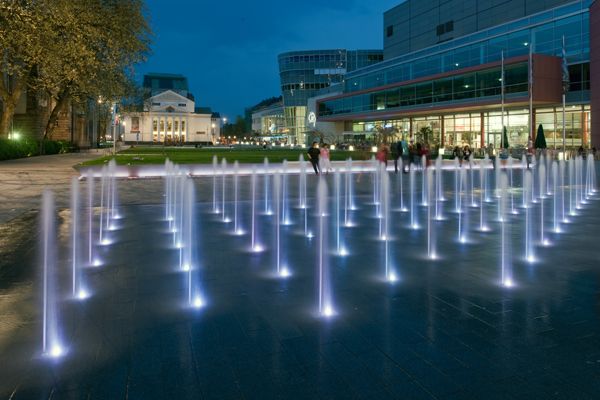
König-Heinrich Platz Averdung. ©agenceter
Truly work of art. The sweeping arc of the planned structure adds an essence of modern art and surrealism to an area often filled with art aficionados and tourists visiting the Ludwig museum. Completing a loop touching all four of these landmarks, the RheinRing connects the two halves of Cologne without adding an additional span to the river.
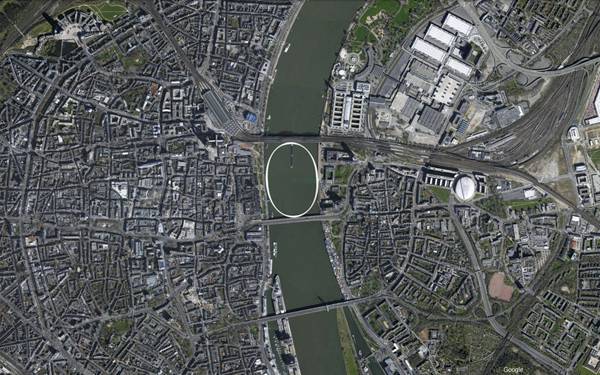
Placement of RheinRing. Credit: Marco Hemmerling and Goolge maps
This public space is intended for the citizens, as an idea of creating an “urban living room”. The designer’s intentions were to accentuate the relationship between the surrounding architecture and landscape, linking several spaces that form the precinct through a network of circulation and verdurous spaces. Solingen Town Square has at its center a group of Japanese Pagoda Trees (Sophora japonica) creating a space around three enormous, organically-sculptured seating elements. The paving of the square is also very well done by its simple solution, yet so impressive.
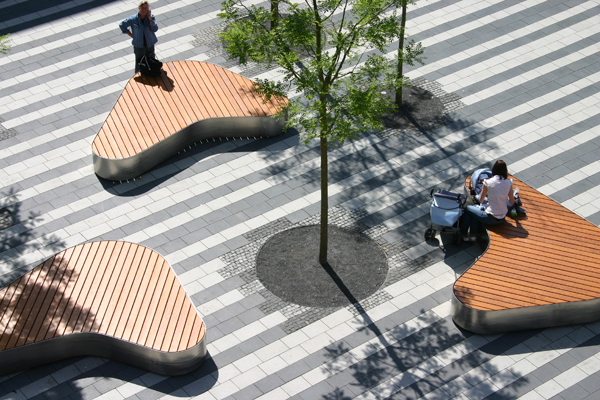
Town Hall Square Solingen. Credit: Landschaftsarchitekt AKNW
Light, shadow, sound, scent and fauna in the park are among the many vehicles used to achieve the most significant purpose this project – the establishment of a connection between humans and nature. French landscape architect Henri Bava came up with an unusual idea, he and his team went down into the depths of Löhne and Bad Oeynhause and discovered healing water and geological structures, which before long were brought out to the surface. It leads to a staircase winding 18 meters down to the bottom of the fountain. Going deeper and deeper, sounds grow louder, light gets weaker, and water comes closer. Just imagine that breathtaking experience.

Photo Credit: Aqua Magica Park by Agence Ter Landscape Architects
Here’s a powerful solution using just a few tricks. With modification of terrain making different levels of height and strong graphic contrast in colors such as orange and green, you must admit that in some way this place invites you in and provokes you. The main thing about this design is that it doesn’t contain the usual fabricated elements such as swings and teeter-totters. Combining only two elements, grass and tartan, all needs have been settled.
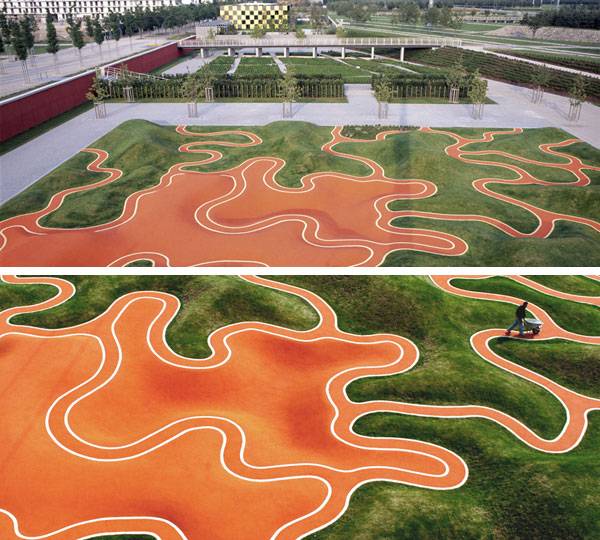
Images courtesy of Rainer Schmidt Landschaftsarchitekten. Top photo credit: Müller Naumann. Bottom photo credit: picture- alliance /dpa / Andreas Gebert
This Research Pavilion was inspired by the underwater nest construction of the diving bell water spider, Agyroneda aquatica. The building process of the water spider’s web was analyzed, and the designers transformed the underlying behavioral patterns of the spider and design rules into a technological fabrication process. The Agyroneda aquatica spends most of its life underwater, and therefore must construct a reinforced air bubble to survive. Would you be brave enough to sit in that kind of environment?
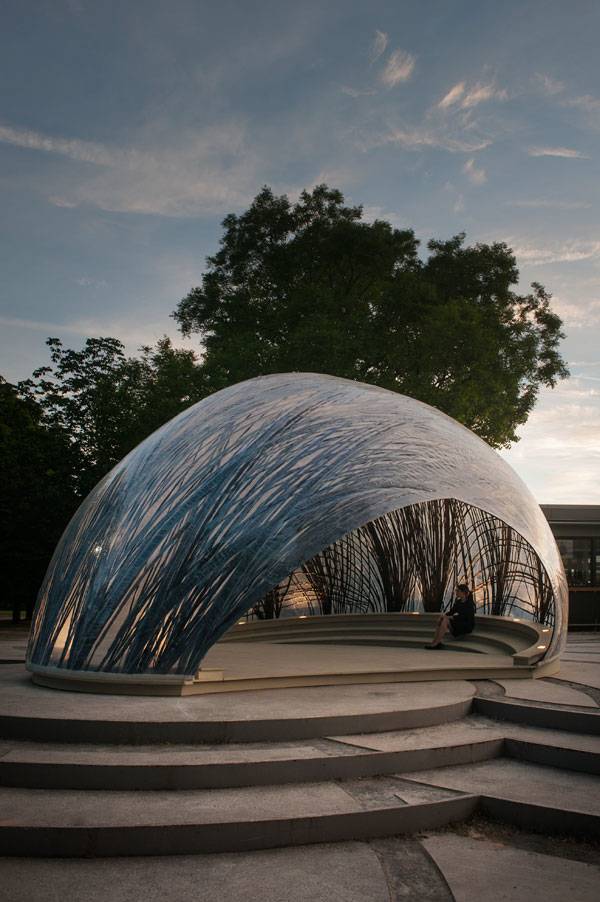
ICD/ITKE Research Pavilion 2014-15. Photo credit: ©ICD/ITKE Universität Stuttgart
The area was used as a quarry for industrial purposes. The starting point of the design concept was the graceful fusion of the two themes that characterize Killesberg – soft, natural landscapes and manmade quarries as hard topographies. The hard karst forms, representing the typical quarry topography, change over time, varying from sharply broken hardscape into soft, rounded landscapes covered by earth and greenery.

Killesberg Park. Photo credit: Raffaella Sirtoli
The organically-shaped structure, designed by HENN Architects, can be defined as a dynamic yet static sculpture with an elegantly curved and softly glimmering roof platform, covering an exhibition and presentation area of 400 m2. Just like the lines of the car, the curves of the building pick up speed and then slow down to end in a seamless shell, representing the dynamism and comfort characteristic of the brand.
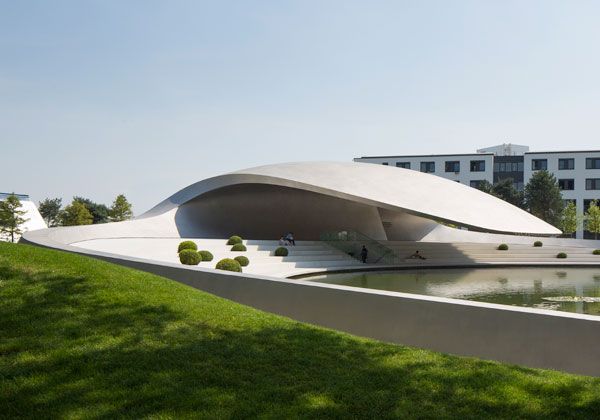
Porsche Pavillion in Wolfsburg, Germany. Copyright Photogapher: HG Esch
During World War II most of the Synagogues were demolished and destroyed. Ever since, Marburg’s Jewish community has worked to rebuild itself, and sincerely have managed to achieve that. This garden adds to the restoration by making a space that is both a meaningful memorial to the people and culture destroyed in the pogroms and a public space integrated into the life of the city. While the palette of materials is limited and austere – steel, stone, glass, and white concrete – the planting palette is restricted, but far from restrained. Densely planted red shrub roses provide a lovely perspective. Roses have a special significance here, since the rose was the only flower permitted to be grown within the city walls of ancient Jerusalem.
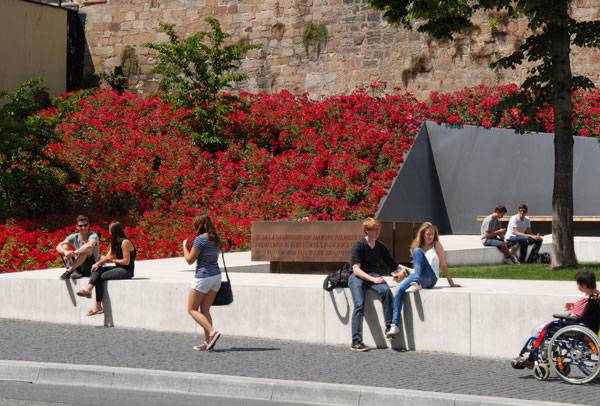
Garden of Remembrance. Photo credit: Bernd Nützel
Landscape Architecture in Germany
‘‘Lustgarten” – Awaits for You Through this small list of projects in landscape architecture, a lot can be learned. First of all there is no doubt that Germans definitely have amazing style and taste for landscaping. Just look at how sophisticated Porsche pavilion looks, and yet the connection with the environment is preserved, and how clean and yet natural, like Killesberg Park shows us. Determined order and the projects’ level of quality makes Germany stand high and proud, for sure. Which project has made the deepest impression on you? Let us know in the comment section below!
CLICK TO COMMENT
Recommended Reading:
Article by Radenka Kolarov
Published in Blog




